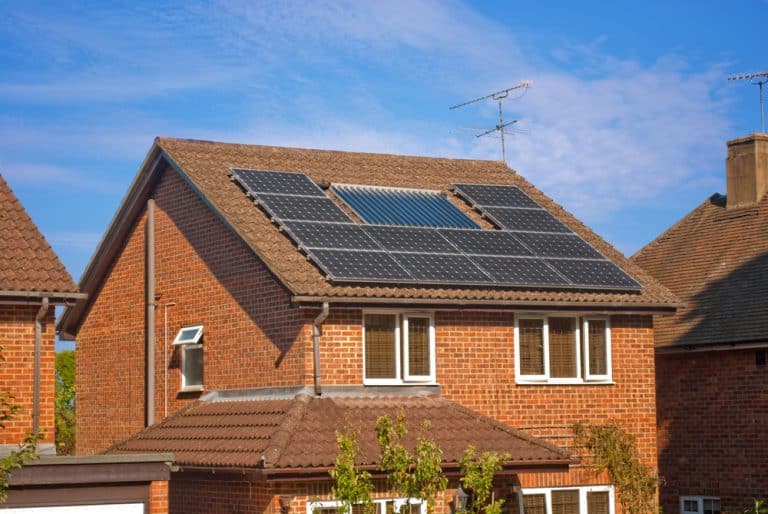MACRS: Green Energy Home Office Incentives

When people think about business expenses, they think about the office. However, many now have offices in their homes. The good news for solar-powered homeowners is running a business out of their homes can expedite their solar savings earnings, leveraging depreciation of residential solar equipment as a business expense.
While depreciation is generally a bad thing, all electrical equipment, solar panels included, degrade in efficiency and therein in their value. However, when the IRS accounts for this, it means more savings through the MACRS incentive.
The Modified Accelerated Cost Recovery System (MACRS) has a 5-year period of depreciation scheduling. Essentially, over 85% of the total system cost could get depreciated over 5 years, and you can accelerate and depreciate 100% of your residential solar system’s cost in year 1. If they have a million in revenue, they have a depreciation expense based on that.
Household energy bills can be high when combined with a home office. This, however, doesn’t need to be the case.
Solar can alleviate the financial burden of extra electricity use. On top of the saving of solar, as a business expense, solar installations qualify for depreciation. Let’s take a look at how solar depreciation works.
Solar Panel Depreciation and Home Offices: MACRS
Through the Modified Accelerated Cost Recovery System (MACRS), businesses minimize their office costs. This solar system incentive allows businesses to recover the depreciating value of office purchases.
How a Home Office can Qualify for MACRS
One of the great benefits of solar for business owners is the MACRS. Homeowners can’t get this tax incentive. However, if the homeowner has an in-home office, solar and other office supplies could be a write-off.
For a home office to qualify for deductions, it needs to have regular and exclusive business use. In fact, it needs to be the principal place of business dealings, storage, or a daycare facility.

Qualified solar equipment is one of the items that can receive depreciation incentives. However, the depreciation is dependent on the class life of the property.
IRS Depreciation and Class Lives
For each piece of property, there is a different class life. This is the estimated depreciation time for that item. Class lives can last anywhere between 3 and 50 years.
Solar equipment qualifies for a five-year depreciation class life. This means that, through the means of taxes, solar receives annual deductions for up to five years.
If the Investment Tax Credit (ITC) is also claimed (which it should be, since homeowners running businesses out of their homes have taxable income), the depreciation reduces by half of the ITC received. This means that the tax basis, or cost recovery of the item, reduces to 85 percent. This, however, isn’t including bonus depreciation.
Bonus Depreciation on Solar Panels
Bonus depreciation is a form of accelerated depreciation. It pays even more for certain qualified items.
In 2017, bonus depreciation for solar increased to 100 percent. Qualified solar equipment placed in service between September 27 2017, and January 1, 2023 can get this bonus depreciation. This means that in addition to the depreciation accumulated over five years the equipment receives an additional 100 percent in the first year.
Qualifying for Solar Bonus Depreciation
Bonus depreciation is only for equipment purchased and used in the same year that depreciation was claimed. If the property is for both personal and business needs, at least 50 percent needs to be for business use.
Claiming Bonus and Other Depreciation
To claim depreciation, applicants need to file the IRS form 4562. Talking to a tax professional before filing for this incentive is recommended. This will ensure that legal action is taken accordingly and where necessary.
Tax Incentives for Private Energy Storage
When purchasing solar, some form of solar backup is a need. This is because solar can’t store the excess energy it produces. This energy is either stored in some form of battery backup and/or put on the grid for others to use.
If excess energy gets put on the grid, it is often refunded to the solar customer through a net metering policy. Depending on the utility company, this refund is either in the form of a credit on their energy bill or in cash. The problem is that this credit isn’t always a 1 to 1 ratio.
Backup batteries like the Powerwall can get expensive. However, tax-paying business owners are in luck. Their energy storage system can qualify for MARCS and in some cases the ITC as well.
When Energy Storage Qualifies for MARCS and the ITC
Private businesses have several different options when it comes to gaining tax incentives for battery backup. If a solar battery is installed without a solar array, this storage device can only receive the MACRS. It will also only get the MACRS if the storage device gets less than 75 percent of its power from a solar array.
If the storage device is powered with between 75 and 99 percent solar, it will receive the MACRS and a portion of the ITC. However, if the storage device is 100 percent powered by solar, it will receive the MACRS and the full ITC.

Energy Storage Depreciation Differences
If the storage system only qualifies for the MACRS, it will get 7-year depreciation. This is equivalent to 20 percent of the cost of the storage system.
Storage that qualifies for both the MACRS and the ITC qualify for 5-year depreciation. This equals 21 percent of the cost of the storage unit. As a business, you can make the most out of your solar experience when you add battery backup to your solar array.



Send a Message
Oops! We could not locate your form.